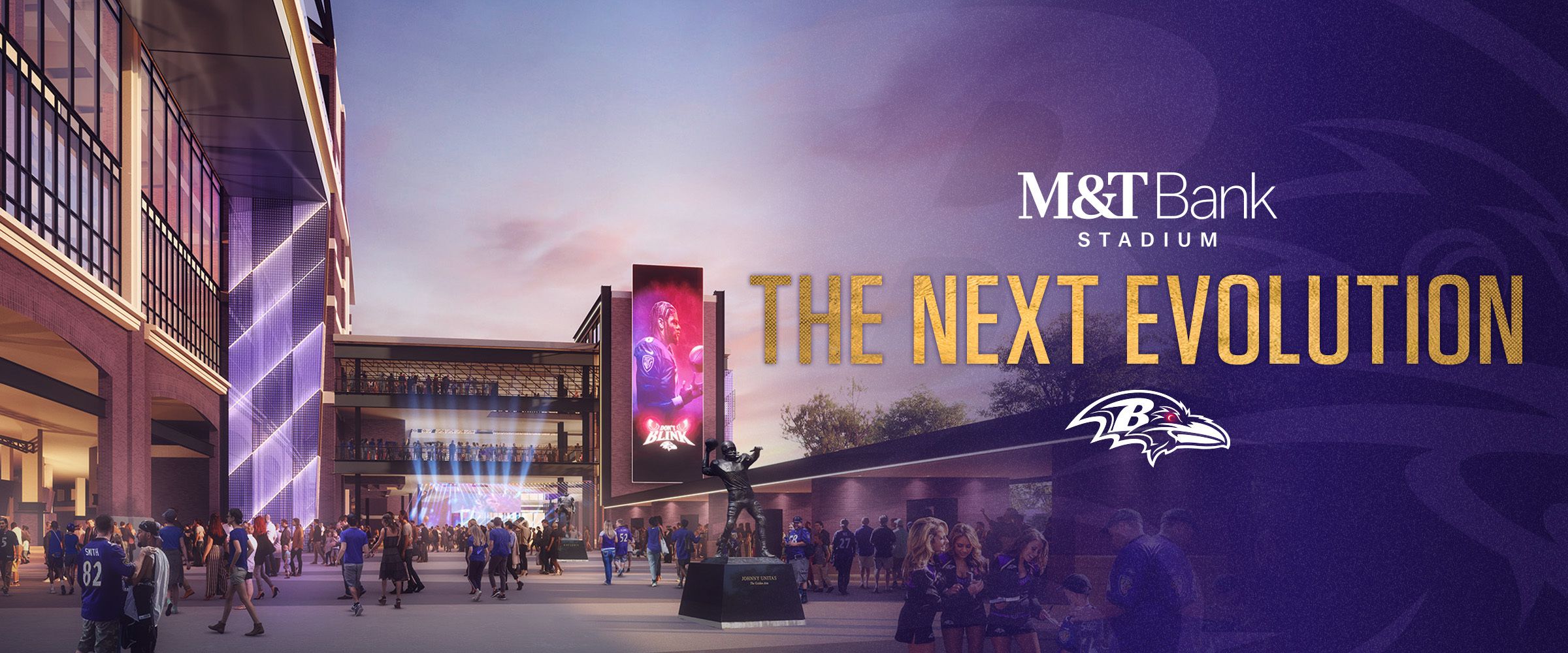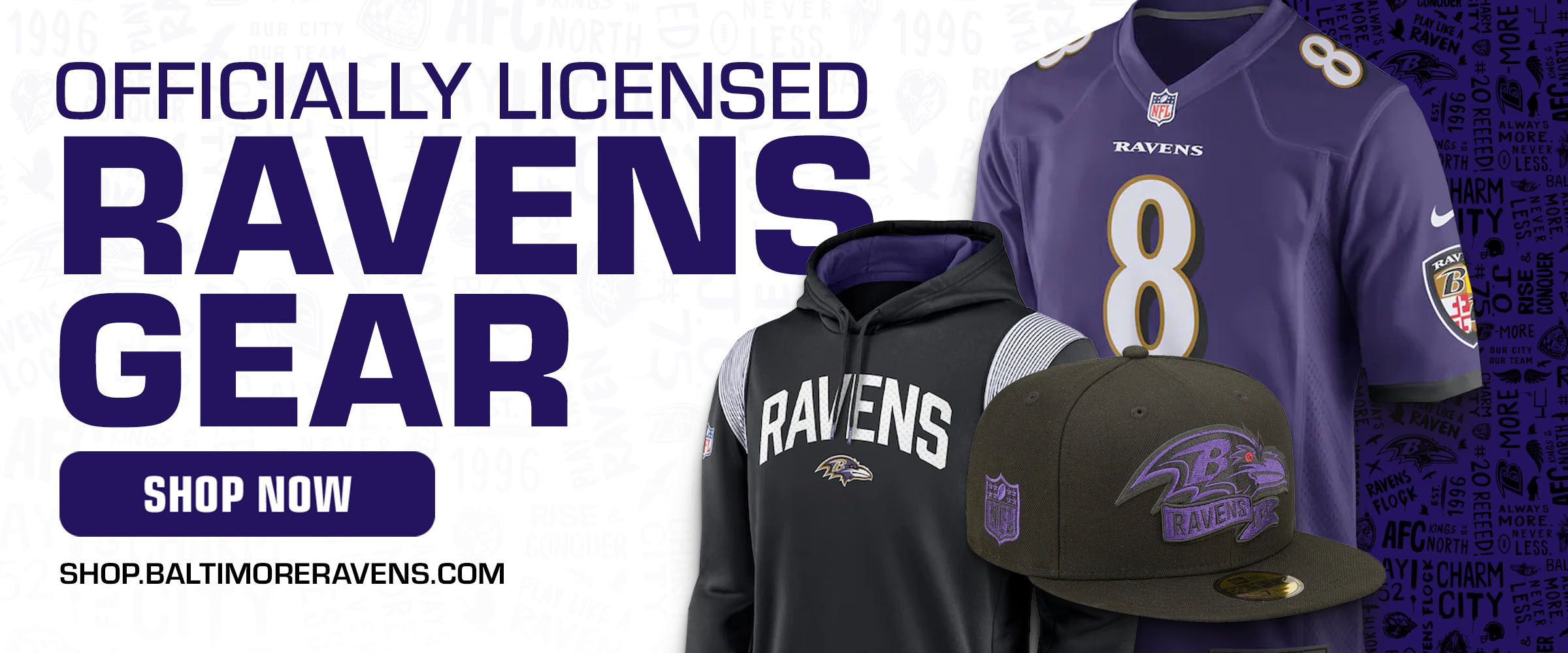Mink: Not surprisingly, there were plenty of questions along these lines. I'm not going to pretend I know what Offensive Coordinator Todd Monken's gameplan was, but I'm going to guess it wasn't so imbalanced.
Why it turned out that way, with just six carries by the running backs and two designed runs by Lamar Jackson, I believe, probably boils down to a few factors. You can't look at this on the surface. You have to take a drive-by-drive nuanced look.
Since you asked for it, here's my (long) take:
Chiefs Loaded the Box Early vs. Run
The Chiefs sent a message from the start. On the first play of the game, the Ravens went with their staple 12 personnel with one running back, two tight ends (including fullback Patrick Ricard) and two receivers, with Jackson under center. The Chiefs loaded the box with eight defenders. They had one single-high safety and two corners. Justice Hill ran it and was stuffed for a 1-yard gain. The Chiefs made it clear they were going to load the box versus the Ravens' heavy formations. That doesn't mean you should stop running against it (opponents often do that to the Ravens), but it was an indicator that the Chiefs were going to sell out to stop the run considering it was their weakness.
The counterpoint is that on the next drive, Jackson sprung a 21-yard gain on fourth-and-1 versus a loaded box and Gus Edwards busted a 15-yard run (versus seven defenders in the box) on the next play. While the Ravens stubbed their toes early against loaded boxes, including on a third-and-1 run with Hill on their second drive, they proved it could be done.
Chiefs' Back-to-Back Touchdowns Burned a Lot of Clock
The Chiefs offense marched down the field on a 10-play, 86-yard drive that took five minutes, 45 seconds off the clock on their first drive. On their next drive, they went down the field on a 17-play, 75-yard drive that ate up a whopping 9:02 to take a 14-7 lead.
Perhaps that drive indicated to Monken that the Ravens were about to be in a shootout and they needed to take some shots and score faster because they were going to have limited possessions. Little did Monken know that the defense would pitch a shutout in the second half. And given the looks the Chiefs were giving them with a lot of single-high safety, the Chiefs were vulnerable to big plays. The flip side argument is that the Ravens were of course not out of the game only trailing by seven points and the Chiefs' long drives meant the Ravens needed to run more clock to give their defense a rest. But that only works if you run and score, and perhaps Monken's gut told him from the Ravens' first couple drives that they might not be able to do that consistently.
Jackson Passed Up on Some Runs
The Ravens' third drive is a good one to look at to try to determine Monken's thought process at that point. It started with an easy throw to Zay Flowers on a stop route that he picked up 9 yards on. Success. The next play was a run-pass option that Jackson pulled and threw outside to Flowers. Problem was, the pass fell incomplete too far out in front of Flowers and the Chiefs had a numbers advantage out there anyway so it probably wouldn't have gone for much. Looking at the end zone angle of the play, it looked like the block was going to be there for Hill and it was perhaps a missed opportunity for a solid run. Hill was again popped at the line of scrimmage on the next third-and-1 play, but fell forward to move the chains.
That's when Monken decided to take a shot. The Ravens ran another RPO and rolled Jackson a little to his right to hopefully buy some extra time with Ronnie Stanley 1-on-1 versus Charles Omenihu. It was a longer developing route with a deep post and Jackson was dialing up to throw to Rashod Bateman, who would've had a great shot at a big play. Instead, Jackson was hit as he cocked back and fumbled. Either Jackson needed to launch it a little sooner, Stanley needed to hold his man off a little longer, or Jackson could have tucked and run (there was a lot of room). Any probably would have worked. Sure, the Ravens could've run there, but the door was open.
More Open Shots Missed
The Ravens' fourth offensive drive started with another designed run with Jackson, which picked up 5 yards. After Jackson's caught his own tipped pass caught by himself, Monken called another run play, this time on a tricky reverse to Flowers. They had numbers on the play and it could've been a big hit, but Nelson Agholor was seemingly checking with the official on his alignment and didn't react at all on the snap, so his man went unblocked, which turned Flowers inside and he was easily corralled. The Ravens could've run on second-and-9 the next play to try to set up a more manageable third down, but they didn't and the Chiefs blitzed and nearly sacked Jackson.
On the next drive, the Ravens had a great shot at another big play. This time it was on a spray fade to Agholor at the two-minute warning. There was no safety help over the top and plenty of field to work with, as Agholor lined up in the slot. Agholor had his man beat, but Jackson's throw was just a step too far and out of reach. Missed opportunity.
Now it's third-and-4, which is another questionable down and distance for a run. If you don't get it, you're at midfield and facing a very tough fourth-down decision. The Ravens passed and Jackson misfired over Hill's head. Punt. That was the end of the first half.
Another Tough Running Start, Followed By Shorter Passes
The Ravens trailed by 10 at halftime. Monken called a run on the Ravens' first play of the second half and Edwards was drilled by safety Justin Reid, who made a nice play, on the edge. Again, the half started with a stuffed run.
Despite the second-and-9, Monken called another run, this time on a jet sweep to Flowers to get away from that stacked box and stress the Chiefs' edges, especially with single-high safety. However, Trent McDuffie made a good tackle on Flowers in a 1-on-1 open-field situation, holding him to just a three-yard gain. On third-and-6, the Ravens had to throw. Baltimore could have maybe moved the chains with a check-down pass to Ricard after he released his block, but Jackson attempted an off-balance deeper throw to Flowers that was nearly intercepted. Punt.
The following drive, Jackson started taking more of the shorter throws. The Ravens got jumpstarted with a short RPO pass to Edwards leaking out of the backfield for a big 16-yard gain. Then Monken called four more straight passing plays, which picked up 27 yards. They were on the brink of scoring range when, on second-and-5, Simpson was called for holding on a play designed for Mark Andrews, which left him 1-on-1 against a linebacker for what could've been a big gain. That put the Ravens in second-and-15 and obvious passing territory. This drive is one where the Ravens didn't call a single running play, instead opting for shorter throws, but the penalty certainly dictated how it ended.
Playing Catchup in the Fourth Quarter
The Ravens finally hit on a designed deep shot late in the third quarter on the bomb to Flowers. That could've turned the game around, but four plays later, Flowers fumbled at the goal line. That was on the first play of the fourth quarter. When the offense got the ball back, the Ravens trailed by 10 with 10:35 to go. At that point, they had to move fast to hopefully squeeze out three possessions to give themselves a chance (and not have to be perfect). That meant more shots and more passes.
Baltimore moved the ball down the field through the air, but Jackson threw into triple coverage and was intercepted. At that point, it was even clearer that Baltimore had to pass the rest of the way.
Downing: The turnovers at the goal line are heartbreakers, no doubt about it. It was especially painful in Sunday's game with end-zone turnovers on back-to-back drives to essentially seal the game. The reality is that giving the ball away at the goal line is how games are lost.
The Ravens are a more talented and complete team than the Chiefs, but giving away points is a recipe for how to lose a game. It sounds cliché, but the best teams don't beat themselves. That's exactly what the Chiefs did on Sunday. They played disciplined football and didn't hurt themselves with turnovers or costly penalties. That's part of the reason they've been to six straight AFC championships and four Super Bowls in the last six years. The Ravens had a great team this year, but they beat themselves with those turnovers, and it's an unfortunate trend of the last three postseason losses. Avoiding goal-line turnovers isn't exactly something to practice, but it all comes back to protecting the football, playing disciplined football and not beating yourself, which will be a point of focus.
Downing: Mike Macdonald is a great defensive coordinator, and I hope for the Ravens sake that he stays in Baltimore for the foreseeable future. But reports are that he’s heading to Seattle. If that happens, the Ravens have good in-house options. Defensive Line Coach Anthony Weaver, Secondary Coach Chris Hewitt, Defensive Backs Coach Dennard Wilson and Inside Linebackers Coach Zach Orr would all be strong candidates. All four of them have interviewed for defensive coordinator jobs with other teams this offseason, and Weaver is also a finalist for the head coach job with the Commanders.
Macdonald is an excellent coach who has certainly made the Ravens defense better the last two years, but this is a high-quality defensive staff from top-to-bottom. The Ravens have a track record of great defense, and I expect that to continue under Head Coach John Harbaugh. Hiring Macdonald wasn't necessarily viewed externally as a home run move two years ago, but Harbaugh had conviction that Macdonald would thrive as a coordinator, and he has been proven correct. If he has to hire a new defensive coordinator this offseason, Ravens fans should have confidence he will make another strong hire. The Ravens still have a strong defensive core with players like Roquan Smith and Kyle Hamilton, and this would be an attractive job across the NFL if it does become available. There would be quality candidates internally and externally for the role, and Harbaugh would have to sort through all of that to decide who makes the most sense to run the unit.
Mink: The Ravens have a lot of building blocks moving forward that should give fans hope for a bright future. There are building blocks at basically every level/position.
First and foremost, there's the soon-to-be two-time MVP at quarterback. A young, Pro Bowl center in Tyler Linderbaum is running the show on the offensive line. Flowers is a star in the making at wide receiver. Defensively, the Ravens have a strong line and will likely try hard to retain Justin Madubuike. They have a stud in the middle with Roquan Smith. They have strong corners with Marlon Humphrey (when healthy) and Brandon Stephens. Safety Kyle Hamilton emerged as an All-Pro and one of the team's best players.
The Ravens will lose some key players from the 2023 squad, but who envisioned Jadeveon Clowney, Kyle Van Noy, and some of these other one-year contract additions doing so well? It's going to be hard for Eric DeCosta to hit for such a high batting average in free agency this offseason, but I have no doubt he'll plug in more impact players into next year's roster to build around a strong core.




















